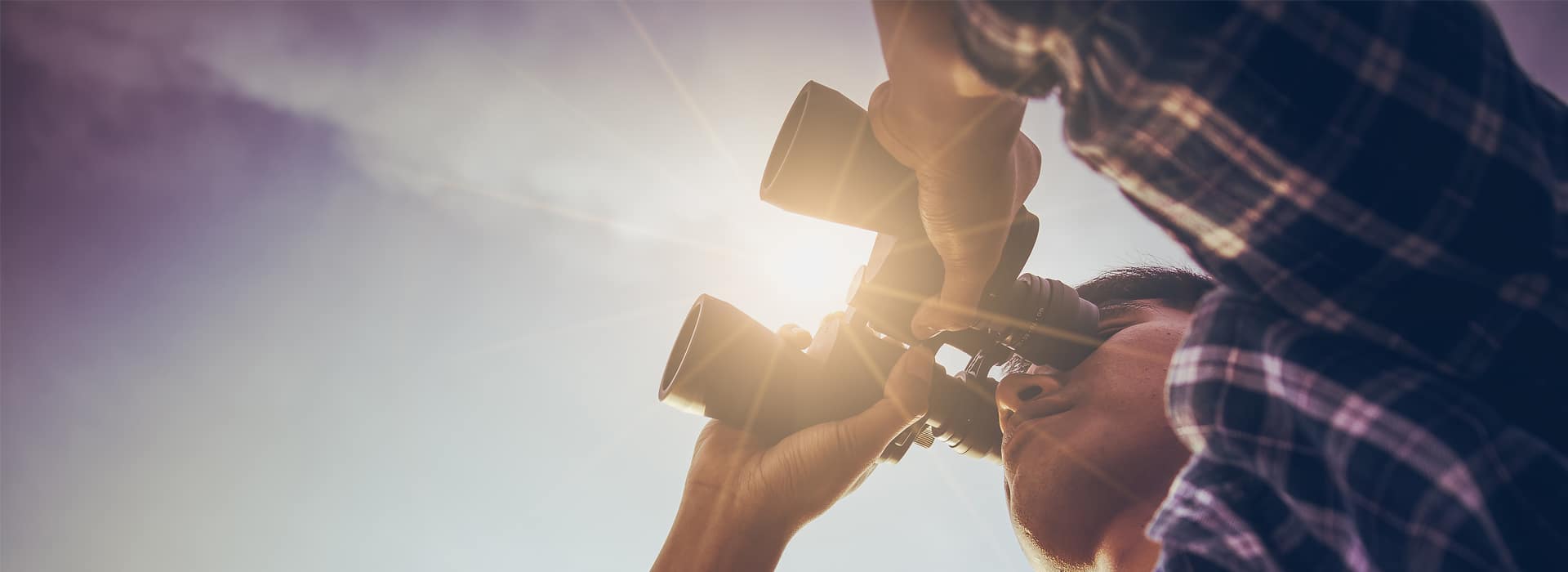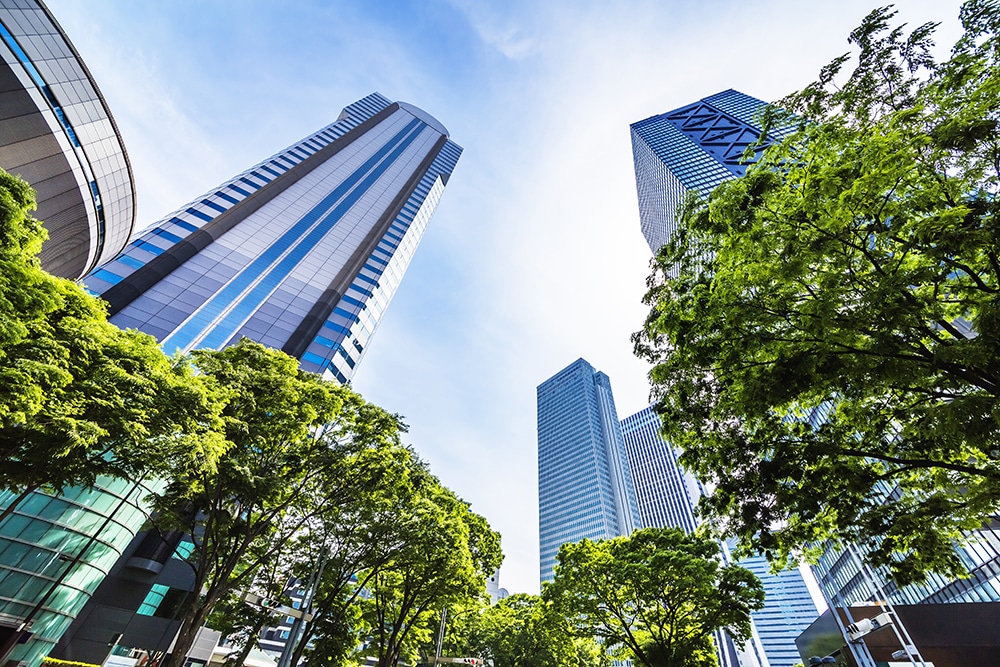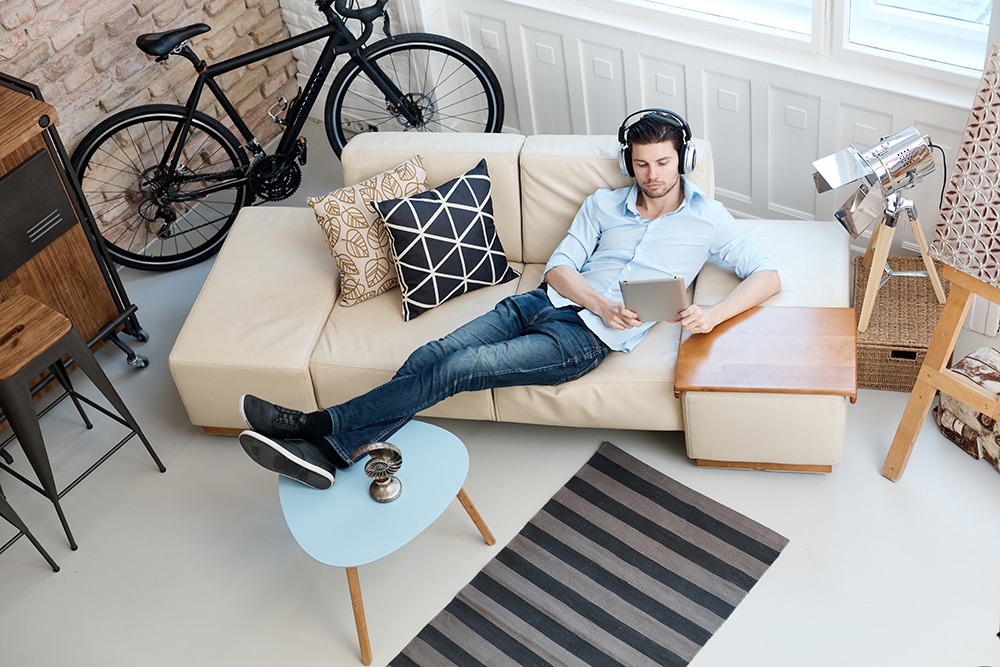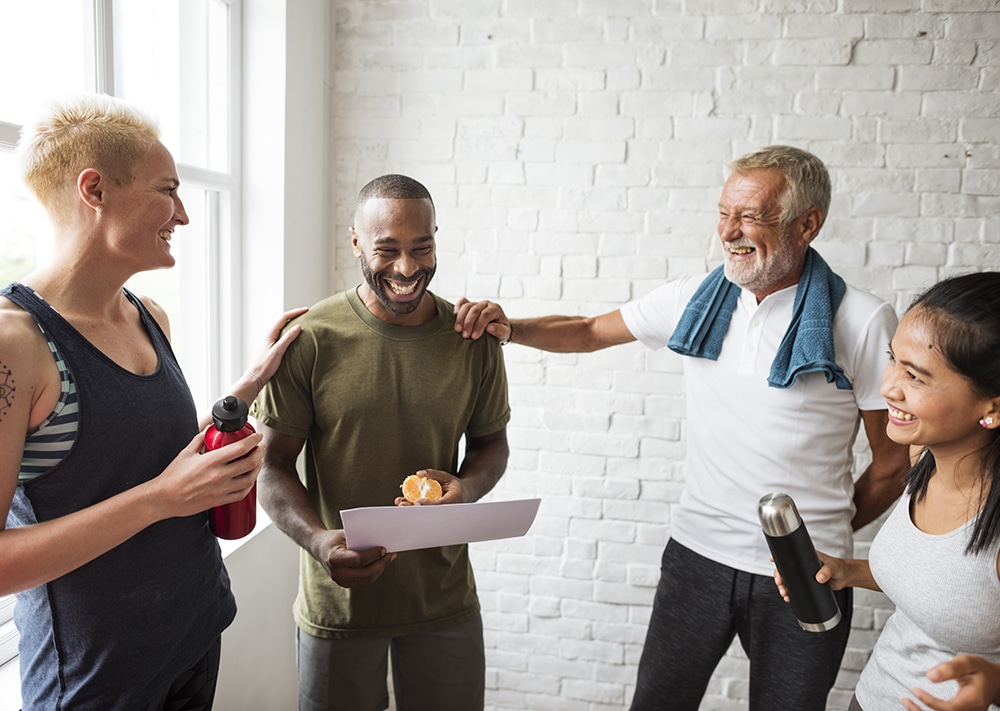TREND-WATCHING – 2020 AND AHEAD PART 2

Part two
Recently I attended a trend-watching seminar at London’s Barbican, where global players including Google, Unilever, Disney, Marriott, H&M, Vodafone, Spotify and Volvo predicted the 10 most significant trends for 2020 and beyond, based on the influence of businesses worldwide. Last month I looked at five of those trends, including brand coins, selective presence and self-expression. Now, with the new year almost upon us, I look at the remaining five.

Trend 6 – Eco-Interventionism
The trend: It will have escaped no-one’s notice that we are destroying our own planet. 2020 will see a tipping point between achieving ‘eco status’ and ‘avoiding eco shame’.
What does this mean? It will no longer be a positive status if you simply opt into eco-friendly trends because it’s the ‘cool thing to do’ (think Tesla, Adidas and Parleys, ‘bleeding’ vegan burgers). Rather, you will face the prospect of feeling ashamed if you do not partake in worthwhile eco causes and change your buying and/or usage behaviour for the greater good.
Our opinion
All organisations which not only accept their role in protecting the planet but also pro-actively influence and spread the message can only be a good thing. As one campaign recently noted: There is no planet B. And when it comes to marketing and communications, there are some innovative and creative ways to keep the message targeted, relevant and disruptive.
In July, Germany-based rail company Deutsche Bahn delivered a No Need to Fly campaign, encouraging locals to holiday at home. Using photos of picturesque German locations that mirror famous overseas tourist sights, the train operator combined an algorithm that identified the landmarks with Facebook data and Google Search to deliver videos that compared in real-time the prices for both locations (the one in Germany versus the one overseas).
A train company discouraging people from flying – understandable. But an actual airline itself?! Almost unbelievably, that’s what KLM did, launching an initiative asking passengers whether their journey would be better on a train – a move that was as bold as it was direct. Being the first with such a brave step may well leave competitor airlines feeling shame at not offering such trail-blazing proposals themselves.
To allow consumers to opt out of shame and opt into eco-intervention, certain products need to become more readily accessible and less exclusive. Tesla is a good example of this. Over the last decade, Tesla has been a desirable, aspirational car. A car for the few rather than the many. But being exclusive is not good for our planet. So, prices and accessibility of these vehicles is now more available than ever, in some cases dropping from $124,000 to $35,000, opening up eco-status to the masses and helping the organisation itself overcome a kind of eco shame, too.
Then there’s the so-called ‘impossible burger,’ the first vegan burger that uses beetroot juice to ‘bleed’ a meaty red hue; invented in an exclusive NYC restaurant and now available in over 7,000 Burger King outlets across America. And the collaboration between Adidas and environmental organisation Parley for the Oceans, bringing us footwear made from recycled plastic waste, with production increasing from one million pairs to 11 million – demonstrating clearly the mass effect of eco-interventionism on our culture and how this global, iconic brand is helping everyone to opt in.
With such broad examples as airlines, vehicles, fashion and burgers, we are excited to witness and take part in the avoidance of eco shame ourselves as more and more brands and companies step up to the challenge, leaving us little choice than to opt-in.

Trend 7 – Changes in living arrangements
The trend: In 2020 brands will make it easier to live life alone.
What does this mean? It sounds negative but it really isn’t. Between 2000 and 2030 there will be 128% growth in one person households, more than any other type… so really this is simply brands and organisations adapting to this mega-trend, as well as maximising opportunities created by attitudes, behaviours and the ways in which we live evolve and change.
Our opinion
Similar to that of trend 6: if brands and businesses are able to turn a situation into a positive or go some way to helping people in specific situations, then that brand or business benefitting too can only be a good thing.
We learn that one third of households in the EU are single person homes, and depending on the age, demographics and reason for that single person household, this can present brands with the chance to make a difference. Take Tokyo for example, where a growing number of businesses cater for single women. Here they have taken a specific segment of the ‘one-person household’ audience and focused on safety and social interactions, via things such as karaoke salons, restaurants for solo diners and apartment complexes that enable women to live alone, safely, surrounded by people in a similar situation. If you make somebody feel that a product or service is for them, it is inevitable they will buy into it.
With companies such as Booking.com launching ‘women around the world’, a guide for women travelling safely with their own company, and Kellogg’s partnering with House Wine to create ‘Cheez it’, crackers and wine for single-serve picnic portions, you can begin to see that the opportunities for many (if not all) businesses to target this growing segment might be limitless. Idea: why not add ‘single-person households’ to your CRM and see where the marketing possibilities take you?

Trend 8 – Inclusive hiring
The trend: In today’s world of transparency, it is becoming increasingly important for organisations to practice what they preach. The popularity of publishing gender pay gaps, discriminatory behaviour and age-based redundancies are encouraging typically marginalised groups to speak out… and for brands to make concerted efforts at inclusive hiring.
What does this mean? The 2020s will see a shift, where who you employ will be less about who you need to get the job done and more about who you support and your impact on society. Companies will be rebalancing their workforces and hiring relevant, marginalised groups.
Our opinion
By its very nature, this is a sensitive topic – however, surely a more diverse workforce is a good thing… and raising the topic of inclusivity can only benefit everyone in the long run. Still not sure? Consider some evidence…
1. Uber Eats in Japan recruits elderly grandmas to deliver ramen noodles in their running shoes
2. A café in Tokyo has trialled full table service with robots wirelessly controlled by paralysed people
3. It has been reported that brands which embrace the employment of people with disabilities are 30% more profitable than brands that don’t. (In fact, 78% of consumers globally agree that how a company treats its employees is one of the best indicators of its level of trustworthiness.)
So, is it really up to us to have an opinion here when the world is making up its mind for all of us?
A couple more examples. Several years back, a client project called for us here at LAW Creative to help place more females in the engineering sector – not only to increase gender fairness but also because the engineering industry may be in danger of a lack of diversity in thought-leadership. And in July this year, Proctor & Gamble, a sponsor of the US Women’s National Soccer Team, donated $529,000 to help close the gender pay gap – $23,000 for each of the 23 players that won the Women’s World Cup back in July 2019.
In a modern world where boundaries are blurring and people’s independent choices are championed, we recognise and advocate fairness in opportunity for all. Not just for the sake of it but rather for the positivity of it.
Trend 9 – Urbanization and air pollution
The trend: If 2019 was all about single-use plastics then 2020 will be about raising air pollution awareness. Urbanisation and industrialisation – two of the largest macro shifts of the last century – continue to improve life for billions of people. Yet they’ve caused air pollution affecting every living creature on the planet.
What does this mean? With the World Health Organisation estimating as many as 95% of people live in areas where outdoor air quality is below official acceptable WHO guidelines and about a quarter of deaths from heart disease, stroke and lung also attributed to air pollution, CITYSUMERS (the hundreds of millions of experienced and sophisticated urbanites demanding more open-minded, more connected urban goods, services, experiences, campaigns and conversations) will begin to demand brands and governments provide clean air as an urban service.
Our opinion
To understand the scale of this ongoing issue, consider this fact: by 2060 two thirds of the expected world population of 10 billion will live in cities – and to make room, we will have to add the equivalent space and geographical area of an entire New York City every month for 40 years. So, it’s a big ask of any brand that does not directly contribute to solving this problem.
However, perhaps the age of tick-box CSR is no longer enough for the public to perceive that brands and organisations are making the required effort when taking responsibility for such a huge global issue.
And change can happen. In June 2018, Stella McCartney opened a flagship London store, featuring an air filtration system that removed 95% of all airborne pollutants and traffic fumes. Not only did this mean it was the only destination in London with clean air on-tap, it also helped raise awareness of the problem, too. Whilst in South Korea, a stand-out shopping mall changes colour on the outside to inform pedestrians of air pollution levels. The mall’s investment in a large scale, head-turning display of air pollution helps draw attention to a vitally important issue and allows people to assess the levels of pollution before continuing their city tour.
Another great example: Renault’s electric car, the ZOE. The company ran a digital billboard in the Romanian capital, Bucharest – one of the most polluted cities in Europe – with purchase prices changing in real-time according to air pollution levels. The ‘digital DisCO2unt Billboard’ is connected to pollution sensors in high-traffic areas and a custom-made algorithm discounts the price as air pollution levels rise. Potential buyers can claim the discounted price on the billboard using their phone to access a landing page before going directly to a local dealership. A great example of creativity highlighting a globally important issue that matters to each and every one of us.
Although it is a big task for companies and brands to tackle (and might not be directly ‘their fault or their issue’) this is actually everyone’s issue and everyone’s responsibility to try and make a difference, no matter how big or small. Whether this is raising awareness or tackling the issue more directly, brands and organisations often have responsibilities, infrastructures and capabilities to contribute to the greater good. Let’s watch this space.
Trend 10 – The wellness economy and combating burnout
The trend: In 2020, brands will aim to help those who are overwhelmed by the pressures of modern life.
What does this mean? In May, the WHO added occupational burnout to its International Classification of Diseases. But it isn’t only the workplace that people are attributing burnout to. Since the advent of ‘mobile’, ‘smart phones’ and ‘on-demand’, people are feeling the pressure to be ‘always on’, whether this be at work, outside work, friends, family, social media (FOMO) and even messages coming from the wellness industry itself!
Here’s an example of an initiative that’s designed to help: Stockholm’s Metro, where 250 digital billboards recently replaced ad content with digital art. In other words, advertising space that wasn’t selling anything! The initiative aims to reduce commuter anxiety by displaying art created specially to remedy negative feelings such as tiredness, fear and stress. Based on the sentiment of the city (determined by Google searches, social posts, traffic reports, etc.) the artwork adapts to lift the mood.
Our opinion
As with some of the ‘social’ trends identified for 2020, it is positive that many brands are seeing the opportunity, not only in a business sense but in a wider context, too. The world continues to change, and in a similar way to urbanisation being good for many but causing air pollution at the same time, here we have our 21st century ‘always-on’ society that, whilst bringing many tangible benefits, can also cause people to struggle with the daily pressures this can cause.
An example such as a global accounting firm offering employees in Australia up to 12 weeks of unpaid ‘life-leave’ demonstrates the kind of angle organisations can take to help internally without the need for self-promotion.
Ultimately, everything is a balance. If we can continue to reap the benefits of technology we should aim to off-set negative affects when these arise, too. Take Instagram Australia, who removed ‘likes’ for users, to instead allow people to focus on the content shared and not how popular a post might be. Being aware of people’s wellness (whether this is a focus on family, friends, employees, colleagues or something else entirely) can only be a good thing. Empathy is a strong tool, one which connects people and can influence behaviour positively. If we all assess our metrics for success to consider people’s wellness in general, then surely this is a good starting point for many organisations who might not be in a position to make grander gestures, such as life-leave and mood-based media messages. The first, all-important step: awareness.
Summing up
From eco-interventionism and inclusivity, through to air pollution, living alone and always-on burnout, we have explored the top 10 trends for 2020 and beyond according to London’s Trend Setting panel of experts, drawn from sources globally. They’ve looked back before looking forward and agree that these 10 trends are set for real disruption in the days, weeks, months and years ahead.
Whilst some might not be immediately relevant to you, isn’t it better to be at the forefront of this exciting, ever-changing global journey as opposed to a last-minute passenger along for the ride? Here at LAW Creative, we think the answer is yes. So, to find out more about how we can help harness the newest worldwide trends to benefit your business, contact josh.kichenside@lawcreative.co.uk and let’s carry on the discussion about future-facing integrated marketing that can work for you in 2020 and beyond.
